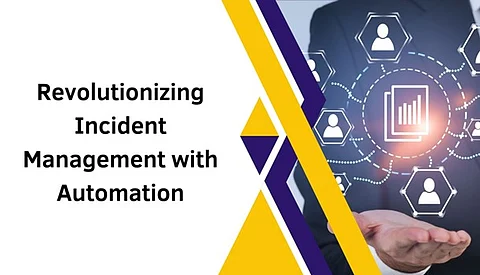

In today’s digital-first world, efficient incident management is essential for ensuring operational reliability and customer trust. Jugnu Misal, an expert in automated systems, explores how innovative platforms like PagerDuty are transforming incident response with AI-driven automation and advanced alert management. This article highlights the critical challenges faced by modern IT infrastructures and the groundbreaking solutions that are redefining operational excellence.
The increasing adoption of cloud-native architectures, microservices, and hybrid environments has amplified the complexity of IT operations. Organizations now manage an average of 231 microservices and over 500 containers across distributed systems, leading to intricate failure points. According to recent studies, enterprises experience an average of 1,372 weekly alerts, 156% more than the previous year, making efficient incident response more critical than ever.
Challenges like alert fatigue further hinder productivity, with only 23% of alerts requiring actual intervention. This overwhelming noise not only delays responses but also increases operational costs, as incident resolution times average 3.8 hours for critical issues. The need for automated and intelligent solutions has never been greater.
Platforms like PagerDuty are revolutionizing incident management with AI-driven solutions that reduce noise and streamline workflows. Intelligent alert correlation engines group related notifications, cutting alert noise by 89% and ensuring teams focus only on actionable threats. Automated escalation workflows reduce responder engagement time from 32 minutes to just 3.8 minutes, significantly improving Mean Time to Resolution (MTTR). AI further enhances the process by analyzing 235 data points per incident, from network telemetry to historical patterns. This context enrichment boosts classification accuracy to 94.8%, compared to the industry average of 76%, ensuring incidents are routed to the appropriate teams with minimal delays.
The implementation of automated incident management yields measurable benefits:
● Incident Acknowledgment Time: Reduced from 12.3 minutes to 1.8 minutes.
● Service Availability: Improved from 99.2% to 99.97%, saving seven hours of downtime monthly.
● Escalation Accuracy: Increased from 71% to 94.5%, minimizing misrouted incidents.
● Organizations have also reported a 73% reduction in incident-related overtime hours, leading to higher team satisfaction and a 68% decrease in employee turnover within IT operations.
The Role of Integration and Scalability
Backbone of modern incident management are comprehensive integration ecosystems, integrating seamlessly data flow and collaboration. The platforms today, can support over 895 integrations to process 78 million events on a daily basis with a reliability of 99.997%. These integrations are made for real time synchronization of data from different monitoring tools, IT service management platforms and analytics systems. This seamless connectivity allows their teams to work together, to quickly get to the right insight, and solve problems more quickly. It leads to a more unified approach to incident management — where siloed systems are not the pain points preventing the free flow of critical information.
Another funny thing is scalability, these platforms must handle the needs of the most dynamic and formidable environments. API-driven architectures are built to handle 3.1B monthly requests and sub-100ms response times while keeping performance consistent even during peak load.
In incident management, we prioritize security to protect sensitive data and ensure ongoing operational reliability in a digitally interlinked world. As tools, advanced frameworks have become essential, utilizing zero-trust architectures to force strict verification rules and to verify that systems' access can only be performed by authorized entities. Additionally, end-to-end encryption protects data undergoing transmission, preventing it from being intercepted by unauthorized personnel, and confidentiality.
Powered by AI, real-time threat detection has effectively evolved the way organizations can detect and respond to security breaches. AI-driven systems capable of detecting 99.97% of threats in real-time with response times cut significantly and a reduction in burden from false positives by 87%. This accuracy helps IT teams to make a clear priority list of real risks to work on, and to avoid missing any vulnerabilities.
Future developments beginning to emerge at a pace such as federated learning, edge computing, or advanced analytics will further improve incident management. Proactive issue detection will be enabled through predictive algorithms, and the impact of system failures will be decreased by real time monitoring. They are also enhancing user experience with AI-enabled communication through personalized, actionable alerts across multiple channels.
In conclusion, Jugnu Misal’s insights highlight the transformative potential of automated incident management in modern IT ecosystems. By integrating advanced AI models, intelligent alert systems, and scalable frameworks, organizations can achieve unmatched operational efficiency and resilience. As businesses continue to adopt these innovations, they are better equipped to handle the growing complexities of digital operations, ensuring reliability, reducing costs, and driving sustainable growth in an increasingly dynamic landscape.
